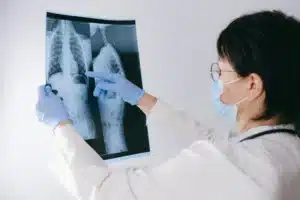
Menu

In the complex world of medical billing, staying abreast of the latest coding nuances is crucial for healthcare providers and billing professionals alike. One such coding element that demands attention is the elusive Modifier 79. Modifier 79 is a valuable tool in medical billing, designed to communicate specific circumstances surrounding a healthcare service or procedure. This modifier is appended to a CPT code to indicate an unrelated procedure performed during the same session or day by the same physician or qualified healthcare professional.
In this blog post, we will explore the mysteries surrounding Modifier 79, providing you with a clear understanding of its definition, description, and optimal usage.
Modifier 79, commonly referred to as the “79 modifier,” stands as a pivotal component in the realm of medical billing, serving as a beacon of clarity in intricate coding scenarios. In essence, Modifier 79 is affixed to a Current Procedural Terminology (CPT) code to signify the occurrence of an unrelated procedure during the same session or day, performed by the same healthcare provider.
This modifier acts as a linguistic bridge, communicating that the subsequent medical service is distinctly separate and independent from the initial one. Crucially, it is vital to comprehend that Modifier 79 finds its application when the subsequent procedure is unforeseen and not a planned extension of the primary service. This distinction is imperative, ensuring accurate billing and reimbursement for healthcare providers.
Key Characteristics of Modifier 79:
Unrelated Procedures: Modifier 79 is exclusively used when two or more procedures are performed during the same session, but they are unrelated. This means that the subsequent procedure is not planned or expected and is distinct from the primary service.
Same Provider, Same Day: It’s crucial to note that Modifier 79 is specifically applicable when the same provider performs both the primary and subsequent procedures on the same day.
Applying Modifier 79 involves a strategic understanding of coding scenarios to accurately represent the distinct nature of subsequent medical procedures. When utilizing the 79 modifier with Current Procedural Terminology (CPT) codes, it is essential to ensure that the subsequent service is unrelated and independent from the primary procedure performed on the same day by the same healthcare provider.
Proper documentation becomes essential, outlining the necessity and unforeseen nature of the subsequent procedure to support accurate billing and reimbursement.
Additionally, it is crucial to distinguish Modifier 79 from other modifiers like Modifier 78, which is used to indicate an unplanned return to the operating room for a related procedure during the postoperative period.
Postoperative Services: Modifier 79 is often employed in scenarios where additional, unrelated procedures are necessary following a surgery, signaling that the subsequent service is distinct from routine postoperative care.
Unexpected Complications: In cases where unexpected complications arise during a previously performed procedure, and an unrelated service is required on the same day, Modifier 79 communicates the independent nature of the subsequent procedure.
Distinct Anatomical Sites: When procedures involve distinct anatomical sites and are conducted during the same session, Modifier 79 helps accurately distinguish between unrelated services.
Documentation Importance: Thorough documentation is crucial, emphasizing the necessity and independence of the subsequent procedure for proper application of Modifier 79.
Modifier Sequencing: It is imperative to ensure proper sequencing of modifiers, with attention to the relationship between Modifier 79 and other relevant modifiers, such as modifier 78. Regularly staying informed about coding updates is also essential for accurate application.
In medical billing the application of Modifier 79 emerges as a critical aspect, adding nuance and specificity to coding procedures. The 79 modifier in medical billing serves as a descriptor for situations where unrelated procedures are performed on the same day by the same healthcare provider.
Its significance lies in delineating the independence of subsequent services from the primary procedure, ensuring accurate representation and reimbursement. This modifier acts as a communication tool, providing a clear signal that the additional medical service is distinct and unplanned.
Navigating the realm of medical billing intricacies demands a comprehensive understanding of Modifier 79, as it plays a pivotal role in safeguarding precision and compliance in coding practices within the healthcare landscape.
Determining the opportune moments to employ Modifier 79 in medical billing requires a nuanced understanding of coding scenarios. This modifier, often referred to simply as “79 modifier,” finds its application when multiple procedures are performed on the same day by the same healthcare provider, and these services are distinctly unrelated to each other.
It signifies an unexpected or unplanned aspect of the subsequent procedure, emphasizing the need for precision in coding to accurately represent the distinct nature of each service.
Proper documentation becomes paramount to support the use of Modifier 79, ensuring clarity for billing and reimbursement processes.
Key Instances for Using Modifier 79:
Modifier 79, often referred to as the “79 modifier,” specifically indicates the performance of unrelated procedures on the same day by the same healthcare provider. Distinguishing it from Modifier 76 and Modifier 78 is essential. Modifier 76 signifies a repeat procedure by the same provider on the same day, while Modifier 78 indicates an unplanned return to the operating room for a related procedure during the postoperative period.
Recognizing these differences ensures precise coding, mitigates the risk of claim denials, and facilitates streamlined reimbursement processes.
As Modifier 79 holds a significant role in medical coding and billing, it is not uncommon for healthcare professionals and billing specialists to have queries about its application and implications. Clearing up these queries is essential for fostering a comprehensive understanding of this modifier and ensuring its effective utilization in medical billing practices.
Modifier 79 is used in medical billing to indicate the performance of unrelated procedures on the same day by the same healthcare provider. It serves as a crucial tool to communicate that the subsequent procedure is distinct, unplanned, and independent from the primary service. This modifier ensures accurate coding and billing, preventing confusion and denials in the reimbursement process.
The 79 modifier, also known as 79 modifier CPT, is applied to Current Procedural Terminology (CPT) codes to specify unrelated procedures performed on the same day by the same provider. It plays a vital role in distinguishing between multiple procedures, signifying that the subsequent service is neither anticipated nor part of the original plan.
Proper utilization of 79 modifier CPT is essential for transparent communication in medical coding, enabling precise representation and reimbursement for distinct medical services.
Unexpected Surgical Intervention:
A patient undergoes a scheduled knee arthroscopy (CPT code 29881), but during the procedure, an unexpected meniscus tear is discovered and repaired (CPT code 29882). In this scenario, Modifier 79 would be appended to the code for the meniscus repair (29882) to indicate that this additional procedure was unrelated to the original knee arthroscopy.
Unplanned Endoscopy Following Colonoscopy:
During a routine colonoscopy (CPT code 45378), a gastroenterologist identifies a polyp that needs immediate removal. An unscheduled endoscopy (CPT code 43239) is performed to address this issue on the same day. In this case, Modifier 79 would be applied to the endoscopy code (43239) to signify its independent nature from the initial colonoscopy.
Distinct Diagnostic Procedures:
A patient visits a dermatologist for the removal of a suspicious mole (CPT code 11300), and during the same appointment, the dermatologist performs an unrelated biopsy on a different area of the skin (CPT code 11100). In this instance, Modifier 79 would be appended to the biopsy code (11100) to convey that this diagnostic procedure is separate from the mole removal, even though both were performed on the same day by the same provider.
Modifier 79 stands as a pivotal element in the intricate tapestry of medical billing. This unassuming code holds the power to clearly articulate the independence of distinct procedures performed on the same day by the same provider. Beyond its technical label, Modifier 79 is a strategic tool that safeguards against coding confusion, ensuring accurate representation and seamless reimbursement processes.
This journey through the nuances of Modifier 79 underscores its vital role, emphasizing its significance in maintaining precision and clarity within the ever-evolving landscape of medical coding



